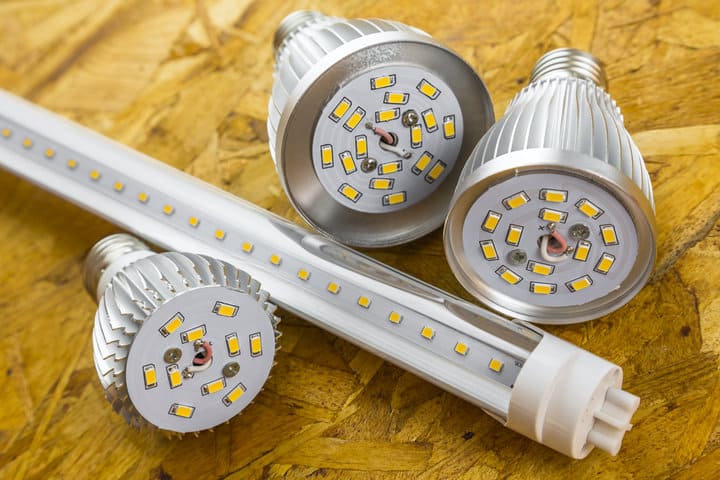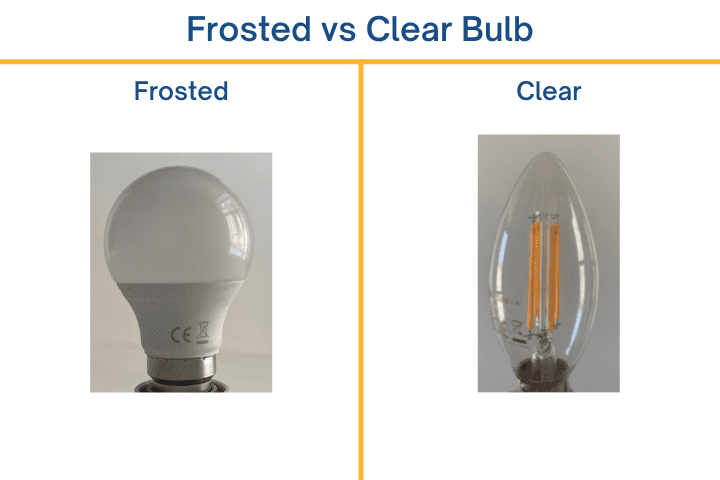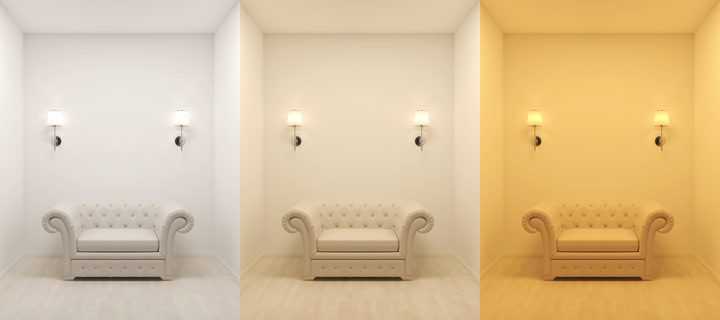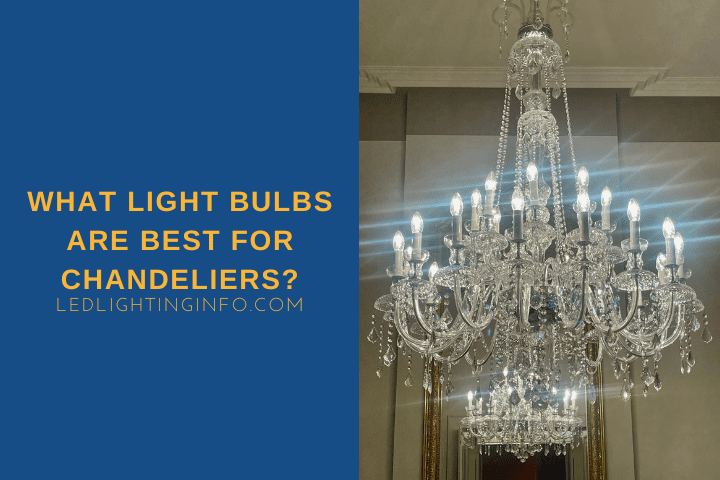When lighting your room with a chandelier, choosing the actual fixture to suit the room is only half the battle.
Because a chandelier is just a fancy hanging ornament if you don’t add light bulbs.
How do you choose the right bulbs for your selected chandelier?
Most chandeliers with multiple lights use thinner, candle-shaped bulbs, but some may use classic A-shaped bulbs. The wattage of the bulbs can be calculated based on the size and use of the room. Other options – light color and clear/frosted bulbs – are subjective based on the use of the chandelier.
In short – there’s no single answer on the best light bulb for a chandelier, but in this guide, I’ll explain:
- Choosing the shape of light bulb for your chandelier
- How to select the right wattage
- Clear vs frosted bulbs
- Choosing the color temperature of your bulbs
- Whether LED bulbs can be used
Choosing The Light Bulb Shape For A Chandelier
This isn’t a massive consideration but something to bear in mind.
Depending on the size and style of your chandelier, you may change the size and shape of the light bulb you buy.
Most compact chandeliers pair best with candle-shaped bulbs – described as a C, CA, or sometimes E shape.
But if you have a more modern chandelier that only requires 3-4 bulbs over a larger space, you should stick with the classic ‘A’ shaped bulbs that typically hang in a pendant fixture.
If you’re unsure, buy a couple of cheap bulbs in different sizes and check how they look on the chandelier.
Make sure they fit – if your chandelier has multiple lights close, ‘fatter’ bulbs may not fit next to each other.
Once you’re happy, you can buy the full amount of bulbs you need.
How To Select The Right Wattage Bulbs For A Chandelier?

Choosing the correct wattage for your room can get complicated quickly, but there are simple rules you can stick to to make things easier.
A general rule of thumb is based on multiplying the square footage of your room by either 1.5 or 2.5, depending on the room’s purpose.
If the room is for general use – like a living or dining room – multiply the square footage by 1.5.
If it’s somewhere you need task lighting, such as a kitchen, then use 2.5 as your multiplier.
So say your dining room is 15 feet by 10 feet – 150 square feet. Multiply that by 1.5 to get a total recommended wattage of 225 watts.
That’s the total wattage of all the bulbs in the chandelier added together. A couple of things to note, though.
This formula is not based on LED lighting. For LED lights, you’ll want to use the same formula but then buy bulbs with an “equivalent” wattage to match the total.
E.g., a 4-watt LED bulb may have an equivalent of 40 watts.
You also need to bear in mind the maximum wattage of your light switch.
For mechanical switches, the maximum is often high, but dimmer switches may have a lower limit, so check the max rating for your switch and don’t exceed that.
Crystal Clear Light Bulbs Vs. Frosted Soft White

OK, so far, you’ve calculated what shape of light bulb you want and the total wattage of the bulbs.
Next, you need to decide whether you want clear or frosted bulbs for your chandelier.
Frosted bulbs are those where you can’t see the inside of the bulb. The frosted casing helps to diffuse the light more.
This makes them a good choice for most chandelier fixtures. The diffused light is gentler on the eyes, so you can appreciate the light fixture more without the glare hurting you.
However, if your chandelier is in a room where task lighting is important – such as a kitchen – then transparent bulbs may provide a brighter light.
Alternatively, some retro-modern chandeliers, particularly chrome ones, pair well with light bulbs that show off the filament.
That’s why you can buy modern LED bulbs that are designed to appear like old-fashioned filament bulbs.
So, bear in mind the style of your chandelier as well as the purpose of the lighting, but both frosted and clear bulbs have their uses.
What Is The Appropriate Color Temperature For Chandelier Light?

Next, you’ll need to consider the color temperature of your chandelier lights.
This is a figure measured in Kelvins (K) and, typically for light bulbs for the home, ranges from 2,000K to 7,000K.
The lower the number, the more ‘yellow’ the light, while the higher the number, the more ‘blue’ the white appears.
Lower numbers are warmer, while higher numbers are cooler.
For most chandeliers, you’ll be looking at lower numbers.
2,000K is a candlelight color, so it works well on traditional chandeliers where you don’t need lights to feel bright.
But on more modern-style fixtures, you might prefer something closer to 3,000K, which is considered more of a pure white and will feel brighter.
Can I Use LED Bulbs In My Chandelier?

Lastly, but far from the least important decision, you’ll need to decide on the overall light type you buy – do you go for classic halogen or a more modern LED?
Chandeliers are often designed with halogen lights in mind.
They used to be used with incandescent, but those lights aren’t generally sold anymore, with halogen being seen as the more energy-efficient option.
Yet LEDs are significantly more efficient, using far less power. And yes, you can use LED lights in your chandelier.
LED bulbs fit the same fixtures as halogen ones – provided you buy the right size of LED – and will last significantly longer.
A huge plus when you’re dealing with chandeliers that may have 10 or more bulbs!
However, there are a couple of important things to point out.
Firstly, while halogens and older incandescent lights would thrive in warm conditions, LEDs do not.
So if your chandelier (or other light fixtures) are enclosed, LEDs may not be suitable.
The enclosed air can cause them to overheat, dramatically shortening their lifespan.
Secondly, LED bulbs won’t work with a traditional dimmer switch.
You need an LED-compatible dimmer and LED bulbs designed to be dimmed.
If you try to use LEDs with a non-compatible dimmer, not only will the dimming function fail to work correctly, but again you can cut years off the lifespan of your bulbs.
It’s a worthwhile investment to replace your dimmer switch with an LED-friendly one. While the LED bulbs and dimmers will be more expensive up-front, you won’t have to replace them for a very long time.
Plus, you’ll save on your electricity bills, too, with LEDs using around a tenth of the power of halogen lights.
Final Words
There you have it – everything you need to consider when choosing the bulbs to complete your chandelier light fixture.
It’s a lot of steps, but you don’t want to pick the wrong bulbs and end up with an atmosphere that is too bright or dim or spoils the fixture’s overall look.
Have you ever regretted your decision when choosing light bulbs or had problems finding bulbs to fit your chandelier?
Looking for an LED bulb but not sure what type you need?
Check out my free bulb picker and select the right bulb within few clicks.

